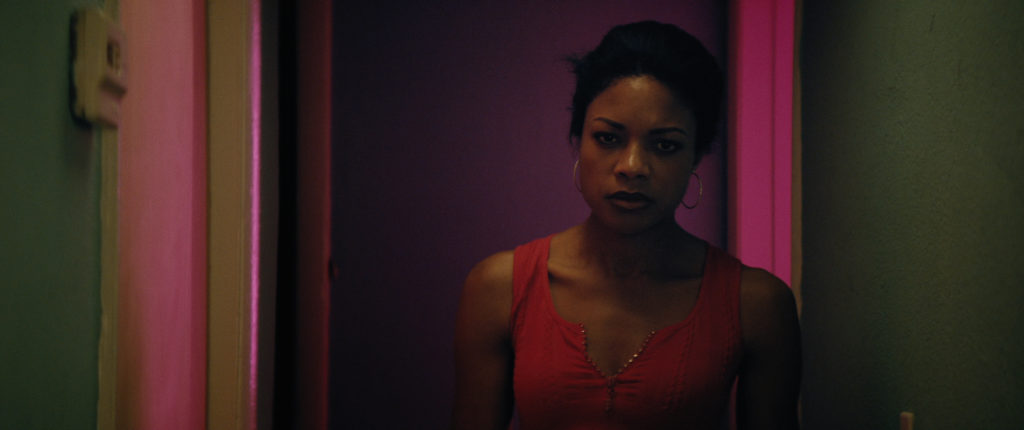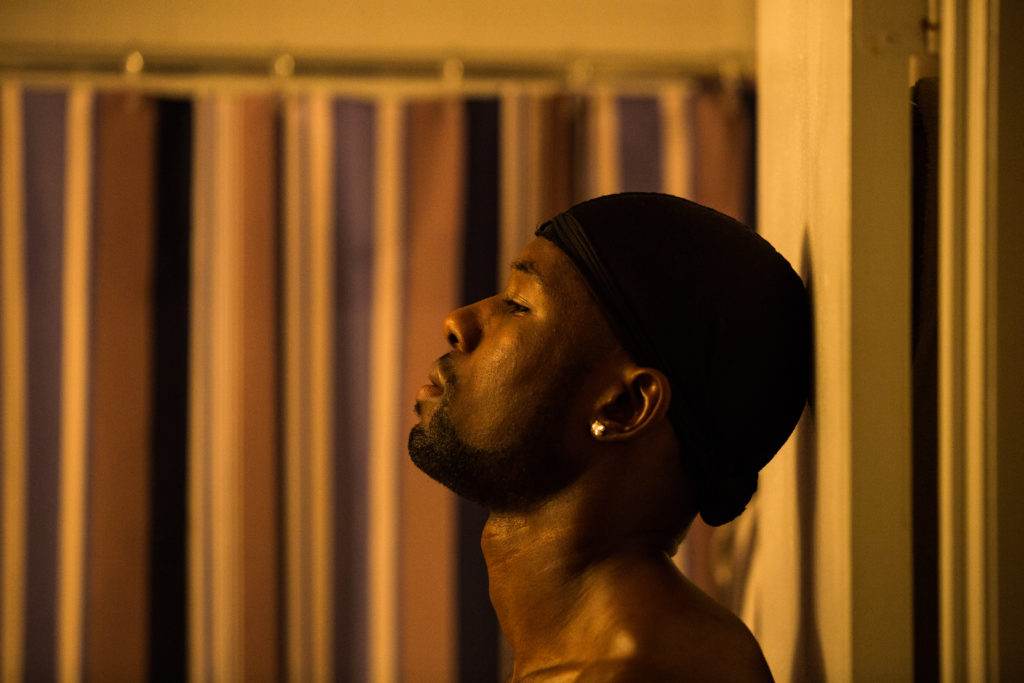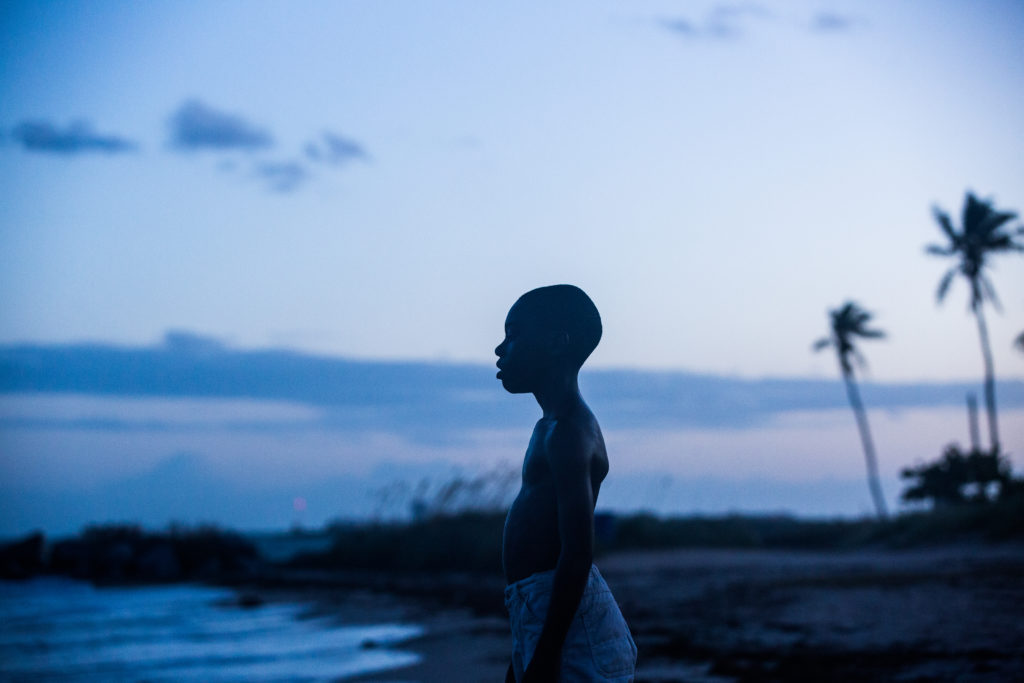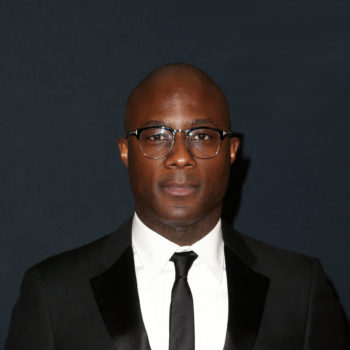Barry Jenkins’s low-budget debut “A Medicine for Melancholy” put him on critics’ radar. But his latest — the meditative coming-of-age drama “Moonlight” — is an indie hit and a major Oscar contender. It’s already up for five Golden Globe awards.
The film, based on a play by Tarell Alvin McCraney, tells three separate stories about Chiron, a child born and raised in the projects outside Miami. We meet him first as a boy, then as a teenager, and finally as a twenty-something. Each story unspools slowly, focusing on gorgeous imagery and small moments.
Interview Highlights
On how the script wound up on his radar
Barry Jenkins: It’s one of those things — it didn’t happen right away. Terrell wrote it way back in 2003, when he was an undergrad at DePaul. We had mutual friends in Miami — actually, kids Terrell had gone to high school with, and then these same kids I had gone to film school with in Tallahassee at Florida State.
And so, they sent the piece to me. And it was beautiful because Terrell and I are very much the same, but in very much different sort of ways. We grew up blocks from one another. Went to a few of the same schools, we’ve worked out. And both our moms went through the struggle with addiction depicted by Naomie Harris in the film. And I could see myself in this character.
And so, I think of it, like, as a relay race. Terrell kind of passed it to me, and I kind of just took it the rest of the way.
On whether or not, as a straight man, he had any anxiety about portraying a coming-of-age story about a queer youth
Barry Jenkins: No. Part of it, because I never really conceptualize that intellectually, as though I’m making a coming-of-age story about a queer youth. It’s like, “No, I’m making a movie about a kid who’s kind of like Terrell, kind of like me, in the neighborhood we both grew up in.” And so, I didn’t allow any of that stuff to ever enter the equation.
On why it was important to feature Chiron’s crack-addicted mother in the film, played by Naomie Harris
Barry Jenkins: I mean, look, I was, at first, reluctant to write the character. I think you can still have this character, Chiron, and he could function — the movie could function in a certain way — without that element of the story.
But, to me, it wouldn’t have been true to my life or Terrell’s life. He’s a MacArthur genius. I’m a guy who worked at the Telluride Film Festival and had a deal at Focus Features. And yet, both our moms went through the same struggle with crack cocaine.

And so, if I’m ashamed or afraid of putting that character in the world because of what the world thinks of that character and not because of the humanity in my relationships with that character, that’s a problem.
And my thing is, I love positive images, but I also love productive images. And I felt like having someone bring life to the life that my mom lived would be productive. And then, the morality of it is up to the audience.
On casting Trevante Rhodes (the adult Chiron), who, at first glance, wasn’t who he had in mind for the part
Barry Jenkins: My idea of the character wasn’t as — if you’ve seen the film, you know what I’m talking about — as hyper-masculine exterior, as Trevante Rhodes. I mean, the guy, he’s just rocked up. He’s like a bodybuilder.
And my experience of him in the room was so jarring –the physicality –that it took me a second to get through and see the vulnerability. And then I realized, “Oh, if an audience does this, too, then we’re onto something.”
Because you see that character — first, you realize he is who you think he is, and then you go, “Oh, no, he is what I think he is!” And then you see, “Oh, yes, but he’s still that guy. He’s still that kid.”

On his approach to moonlight’s cinematography and capturing Black skin on film
Brendan Francis Newnam: But there’s some sequences where you linger on his body, and in the critical reception of this movie, a lot has been talked about how this movie is the movie for this year, and how black bodies have been thought about in ways by the mainstream public that they haven’t before, partially because people are paying more attention to violence perpetrated on them by the police, etc.
Barry Jenkins: You know, there were two parts of it. One was, not necessarily the black bodies, but the black skin was very important to me. And, in this film, my approach to the skin was, again, to reflect my memory, my childhood, the beauty of this dark skin. You know, the way it shines, the way it catches the light, the way it reflects and refracts the light. So, that was part of it.
As far as the male body, I would say the male body, not necessarily black bodies — I don’t think I was trying to make a political statement in that. But what I was trying to do was the third story is overtly sensual.
I do think, in the thawing of this character, in his actual person coming back to the surface, he’s starting to see the male body or allow himself to see the male body in ways that he has forbid himself from seeing. And my approach to it was, again, I’m trying to preserve Terrell’s voice. Terrell looks at a male body differently than I do. And so, this camera is going to look at the male body in the third story in a very sensual way. And I think it works with the consciousness of the character, again.
Brendan Francis Newnam: Another outstanding thing about this movie is that it’s highly aestheticized. You saturate color, the way the camera rests on Chiron. Even the soundtrack is an active character. Were you ever worried that stylizing the film would maybe distract from the story?
Barry Jenkins: No, the way I saw it was — because the story, the actual story, the narrative, is so pared-down, you know? Instead of trying to tell 80 beats in 100 minutes or 80 story developments in 100 minutes, we do like, six, like two per chapter. It’s just these pivotal moments in this guy’s life.
So, because of that, aesthetically, by creating space in the narrative, you create this room to have the aesthetic carry the voice. This movie is not driven by the linearity of the plot. It’s driven by the consciousness of the character.
And, once you do that, I think filmmaking, as an art form, is uniquely suited to have the craft, the aesthetics, the formalism actually create theme and carry the voice. And that was our approach to the process.

On choosing not to portray the lower-class with a gritty aesthetic
Brendan Francis Newnam: I read a review or just kind of reflections in Film Comment, which I thought was interesting, which talked about how cinematic naturalism is usually conflated with authenticity. And often, when we see movies about a middle- to lower-class family, we expect gritty realism. We respond to like, “This is authentic.” And yet, you — even hearing you talk about it — you decided to not go that route.
Barry Jenkins: Yeah. I mean, it was one of the earliest decisions we made. In the end, I did realize there were certain things we did stylize that were interesting, I’ll say, or elevated. But then I look at that swimming scene, and I think because we were trying to create a scene that derives from consciousness…
Brendan Francis Newnam: This is a scene where a young Chiron, played by Alex Hibbert, is taught to swim by Juan, a local tough guy who’s starting to look out for him.
Barry Jenkins: Exactly, by Mahershala Ali as Juan. We get there, and there’s this huge storm coming in, I got 90 minutes to shoot this scene. But now, aesthetically, I already know, in this moment, the lens is going to be half in the water, half out because Little is half in the water, half out.
And the storm is coming in, and all I can rely on is aesthetically, craft-wise, how am I carrying Little’s consciousness right now? Oh, I’ve got a lens half in, half out. I’m just gonna work from that aesthetic.
And we end up with this sequence that — and it’s weird for me to say this because I made it. I don’t like to talk about my own stuff, but I think it’s beautiful, what Mahershala and Alex share in that moment. And that comes from allowing ourselves the freedom to have the aesthetic carry the voice.
On the odd films he planned on making between his “Medicine for Melancholy,” and “Moonlight”
Brendan Francis Newnam: One was this movie kind of like “Die Hard” about San Francisco.
Barry Jenkins: I wasn’t actually working on that one. That was kind of like, on a lark. Aaron Katz — who did “Quiet City” and “Land Ho!” — he and I are good friends. And I love [“Die Hard” director] John McTiernan, he loves [“Die Hard 2” director] Renny Harlin. People who see our movies would not assume that.
And so, I was trying to write a movie that Aaron would direct, and it was called “Bridge Over Troubled Water.”
It was about a cop who can’t afford to live in San Francisco. He lives in Oakland, and he’s driving across the Bay Bridge, and it gets taken over. And he has to save the bridge. So, it’s “Bridge Over Troubled Water.”
Brendan Francis Newnam: So, pause right there.
Barry Jenkins: I will say, can you imagine the aesthetic of “Moonlight” applied to that story?
Brendan Francis Newnam: So, that’s where I’m going with this question. The other, and this sounds a little more interesting, but it’s a movie kind of about Stevie Wonder and time travel, which had Solange Knowles kind of on board. So, in what ways is “Moonlight” not a Barry Jenkins movie, or who haven’t we met yet?
Barry Jenkins: Oh, well, I mean, you’ve definitely not met the John McTiernan Barry Jenkins, that’s for sure. Or the Michel Gondry Barry Jenkins.
You know, I think I have very wide-ranging taste. It’s interesting. People see this film and see “Medicine for Melancholy,” and they think they’re very different. And I go, “Well, it’s kind of the same editor, same DP [director of photography], same director. We approached it the same way. It’s just the resources were different and the story was very different.”
So, I’m not sure. I’m asking the same question. I went a long time between films and, theoretically, hopefully, I won’t go as long between this film and the next. And I’m very curious to see what I aspire to, as well. I’m working on the Colson Whitehead book right now, “Underground Railroad.” I wouldn’t have thought I would fall in love with that. But I read it and I was like, “Oh, my goodness! Please let me have it.”
And the beauty of this process, talking to people like you and everyone seeing the film, is that it’s creating the opportunities to find material like this and actually explore it.


